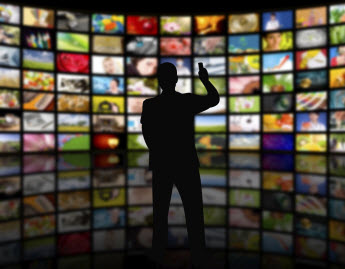Statistics Spotlight Choices, But Don't Explain Behavior

It's that time of year again: The Interactive Advertising Bureau (IAB) has released its annual Consumer Usage Digital Trend Report.
A conclusive analysis of how Americans spend their time on both computers and mobile devices, the IAB report breaks down digital consumption for entertainment, ecommerce, social media and a dozen or so other areas.
Of particular interest to us at TVRunway are the statistics it shares surrounding streaming and digital media.
For starters, the report reveals that people use their phones for different stuff than they do their computers. Now, that's no surprise. I personally hate checking email on my phone, but good luck getting me to listen to Pandora on my computer. But those are both behavior-driven decisions. I don’t like emailing on my phone because I want to proofread what I’ve written before I hit send. I don’t listen to Pandora on my computer because I like to listen to music while I walk. Real-life decisions drive digital consumption statistics.
So how do we explain why NBC, for example, fares better than CBS on mobile but on computers CBS comes out on top? In December, 63.28 million people watched CBS.com via computer compared with 55.33 million watching NBC.com. Mobile NBC numbers were 37.197M, and CBS's were 34.211 million. Both networks’ OTT offerings let you access longer-form television shows that also air linearly. And both provide full episodes as opposed to just clips.
Of course, CBS makes you purchase All-Access to watch by phone, whereas you can watch on your computer for free. I love The Good Wife -- don’t get me wrong -- but why would I pay $5.99 plus tax to watch it on my phone if I can open up my laptop and watch it for free? I’m an at-home, Saturday binger, so I don’t need the phone option for on-the-road mobility. I like to view by phone because I sleep beside my phone and I don’t have to get out of bed to watch first thing in the morning.
For this reason, I’ve gotten hooked on a lot of CW shows lately. In IAB’s report, The CW network didn’t even rank on the top 10 list of streaming sites or TV apps visited. So my behavior obviously does not mirror that of the masses. What this shows, though, is that it’s not enough to look at the statistics around a thing — you have to think about why those statistics exist. I am a viewer ratings point for all things CW. But am I, a 39 year-old woman who’s never bought a comic in her life, DC Legends of Tomorrow’s target audience? Probably not. But unlike CBS, The CW doesn’t make me get out of bed and put on pants.
In business, it’s very tempting to allow statistics to control our decisions. Statistics are reliable. Statistics help us understand and predict things. But were we to go by statistics alone, The CW would have every reason to think that 39 year-old non-comic readers are a future growth market. And CBS would think I didn’t own a phone.
Nova Spivack, CEO of Bottlenose, a company that identifies trends in live TV and other areas, is a big proponent of futurecasting. Forecasting — what we do now — takes the statistics that measure our present and our past, and uses those numbers to predict what will happen in the future. Futurecasting, though, looks at the behavior that drives those statistics and predicts what will happen based on those real-life trends.
So while the IAB report is stocked to the moon with interesting data, what I really want to know — and how TVRunway provides data — are the micro-factors that caused those statistics to come to be. And that’s what really matters — getting down deep to the causation behavior that we never really measure because, even though it monitors macro-trends, every individual is motivated differently and because sometimes people themselves don’t even know why they do what they do. And also because nobody wants to measure the number of Saturdays I put on pants.
Terena Bell is CEO of TVRunway, the industry's first OTT commerce platform that doesn't edit, tag or alter the original video in any way.
Multichannel Newsletter
The smarter way to stay on top of the multichannel video marketplace. Sign up below.
